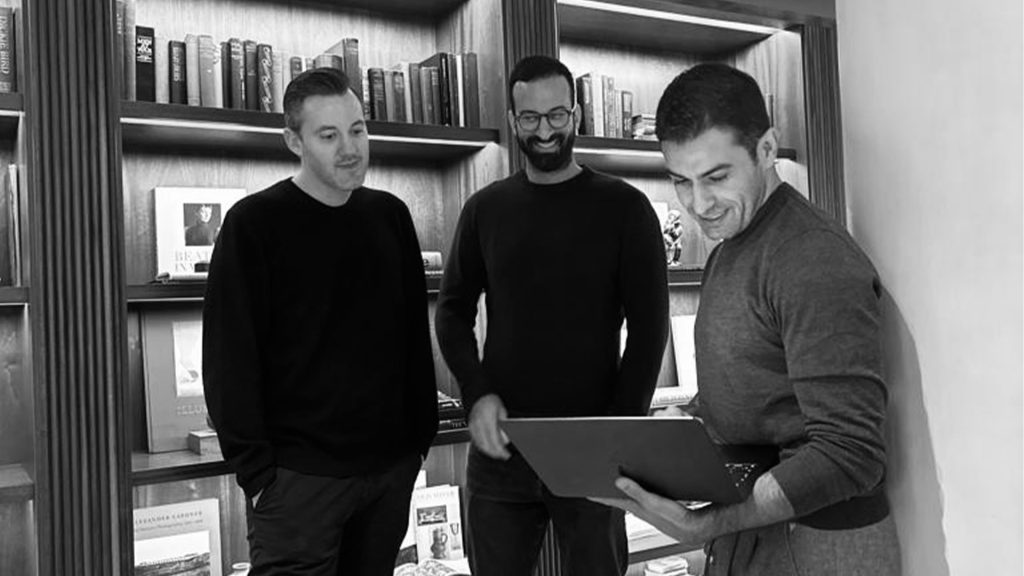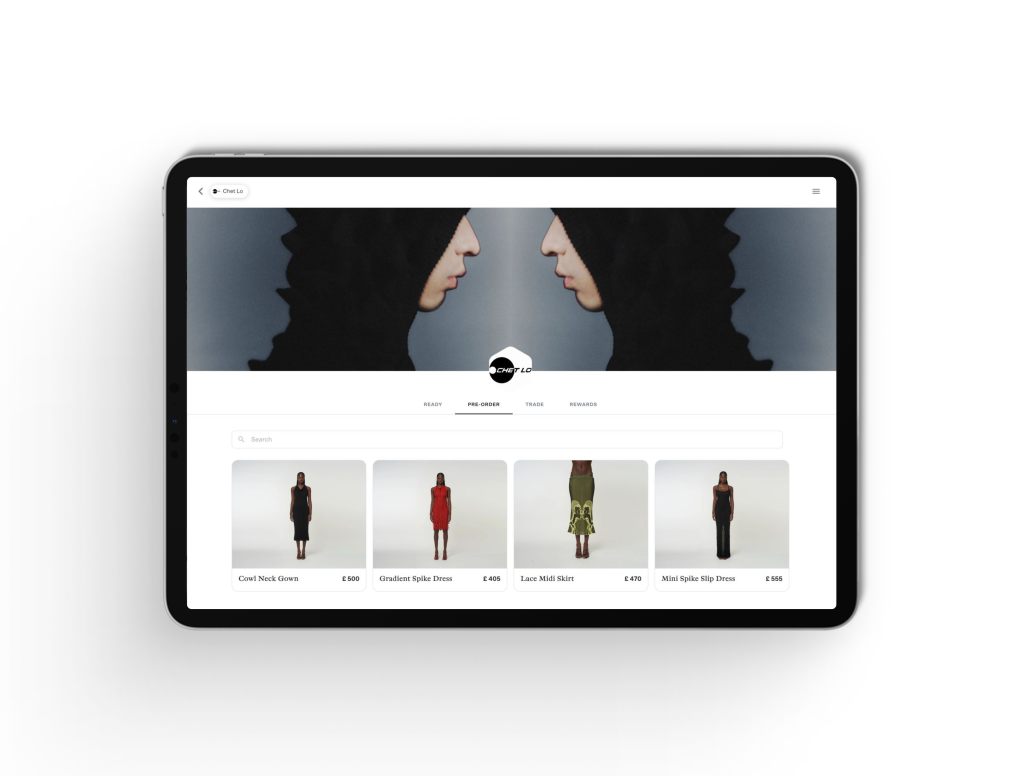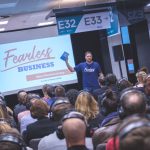While most e-commerce platforms are busy pitching “no-code simplicity” and then directing users toward six plugins and a developer, UPPFIRST took a different path. It was built around the idea that creators and brands should be able to sell online without needing to learn CSS or beg for investor money to cover inventory they might not even shift.
Arnaud Touret, one of UPPFIRST’s co-founders, knows what it’s like to battle with inefficient systems and watch creative businesses buckle under outdated wholesale models. With a background in tech and a founding team with experience in fashion, finance, and operations, Arnaud and his team set out to build a platform that actually solved the problems faced by emerging brands.
That platform, now earning around $10,000 in monthly revenue, has already processed over $1 million in total sales since launch. With early adopters ranging from up and coming designers to global celebrities, UPPFIRST has grown into something far more than a pre-order tool. It has become a community sales engine that connects sellers directly with their audiences, cuts out the excess, and lets the products speak for themselves.
And yes, Nicki Minaj used it to launch her sneaker line and hit an 8.7% conversion rate in the process.
My co-founders brought direct experience in fashion, which was our first target industry. Together, we saw an opportunity to build a more adaptable, intuitive commerce platform.
Arnaud Touret

Why Traditional Ecom Wasn’t Working
The idea for UPPFIRST didn’t come from a pitch deck or a hackathon. It came from frustration. In the world of independent fashion and creator led brands, most selling platforms were either bloated, expensive, or designed for businesses with far more capital and time than most people realistically have.
The typical process involved buying inventory upfront, guessing what might sell, building a full website, running ads, and hoping for the best. Arnaud and his co-founders, including Payam Mirtorabi and Ed Diner, saw an opportunity to make selling feel less like gambling and more like planning.
Their solution was to build a platform that supported presales, made to order drops, and in stock sales from a single interface. Sellers could offer products in minutes, accept two part payments, and collect demand data before anything went into production. Not only did this improve margins, it also reduced waste, which is especially relevant in industries like fashion where unsold inventory often ends up in landfills.
Building UPPFIRST: From MVP to Full Platform
The team started with a 100-hour discovery sprint, diving into market research and mapping out every pain point they wanted to solve. From there, they outsourced development for their MVP, a pre-order platform focused on fashion drops, while keeping a tight grip on product vision and user experience.
The first version was lean but effective, brands could launch products using a two-step checkout process, giving them cash flow without committing to production too early. Once the MVP was validated through early use cases and feedback, the team raised a pre seed round and used the funding to bring tech in-house. That move gave them speed, control, and the ability to scale the platform to meet demand without losing focus.
Over time, they expanded into full storefronts, added support for in stock and wholesale selling, and introduced features that let brands build loyalty through community rewards and brand led experiences. Today, UPPFIRST handles everything from product launch to checkout without sellers needing to touch code or third-party tools.
The Nicki Minaj Test
One of UPPFIRST’s biggest public moments came with the Nicki Minaj and LOCI sneaker launch. With over 300 million fans across her social channels, the campaign put UPPFIRST’s infrastructure under serious pressure.
And yet, the platform held up, no crashes, no errors, and a record 8.7% sales conversion rate. The tech did what it was designed to do, simplify the process for the customer and support the seller at scale.
It wasn’t just a moment of visibility. It was proof that UPPFIRST could handle launches for high-volume brands while remaining accessible to much smaller creators. The platform has since supported releases from fashion labels like Chet Lo, Roksanda, Ahluwalia, Paolina Russo, and others. These often tie into runway shows, using QR codes to enable real-time pre-orders from the audience.
This system not only drives immediate revenue but gives brands early data. If customers are ordering more of one colourway or design, they can shift production accordingly, rather than relying on guesswork and historical sales patterns.

Launching, Learning, and Scaling
The very first launch partner was HEAT.io, who used UPPFIRST to pre-sell luxury mystery boxes from the Vetements archive. The boxes sold out within an hour, giving the team validation and a foothold in the luxury market.
From there, growth came through a mix of high visibility drops, Instagram outreach, and press coverage in publications like Vogue Business and 1 Granary. One particularly well-timed article brought in over 100 signups overnight. Rather than letting them onboard cold, the UPPFIRST team personally contacted each new user, gathered feedback, and helped them get started.
Scaling came not from ad spend or influencer blitzes, but from aligning with moments. Product drops, fashion weeks, and events where brands already had attention became natural points of activation. UPPFIRST stepped in to make that attention shoppable.

What Makes UPPFIRST Different
Beyond the functionality, what sets UPPFIRST apart is the transactional model, unlike marketplaces that take 15% to 30% commissions or charge monthly fees before a seller even makes a sale, UPPFIRST charge a low single-digit transaction fee that decreases with volume and then later introduced an optional $9.99 monthly plan for recurring users.
The platform is also built around community commerce and sellers are encouraged to reward buyers with credit, early access, or perks that turn single purchases into ongoing relationships. This model has attracted a broad range of users from first-time creators testing an idea to high end designers simplifying D2C (direct to consumer) sales. UPPFIRST works as a testbed, a sales engine, and in some cases the only infrastructure a brand needs.
The biggest lesson? Persistence pays off. Don’t be afraid to hustle, reach out, follow up, and fire moonshots—some of our most valuable partnerships came from taking a chance and putting ourselves forward. If you believe in your product, punch above your perceived weight.
Arnaud Touret
Lessons in Building and Operating
Like most startups, there were early mistakes, outsourcing helped them build quickly, but relying too heavily on external partners created friction between vision and execution. As Arnaud highlighted, no one else cares as much as the founders do and bringing tech in-house gave the team speed, precision, and full alignment.
Another major lesson was around timing, the platform launched before it was perfect, and that turned out to be the right call. Early feedback from users shaped development far more than any internal debate could have.
Persistence also played a part, many of UPPFIRST’s best opportunities came from cold outreach, follow-ups, or taking a shot on collaborations that felt just out of reach. Success came not from waiting, but from putting the product in front of the right people and staying at it long enough to gain trust.
The Vision Going Forward
Fashion has been the proving ground, but the team sees UPPFIRST’s future in multiple avenues, they are already looking toward events and ticketing where the same issues of overproduction and discnnected distribution exist.
The long term vision is about simplifying selling and removing unnecessary middle layers, whether it’s a fashion brand, a musician, or a craftsperson, the idea is the same, providing a way to sell directly to their community without friction, waste, or unnecessary cost.
As Arnaud points out, younger consumers are increasingly drawn to authentic experiences, they want transparency, connection, and participation. Whether that’s ordering a product and then joining a Zoom call with the designer or buying something made only after demand is proven, UPPFIRST is building the infrastructure to support that shift.






